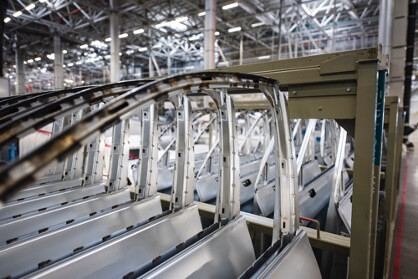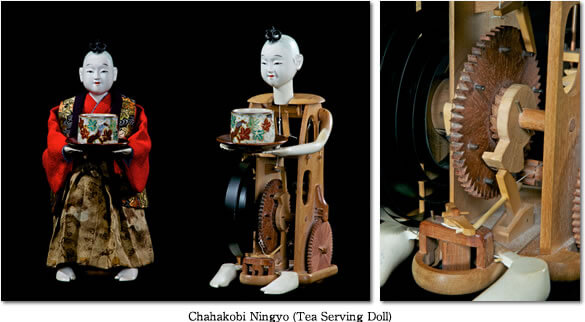As an assistant in the manufacturing industry, I have seen first-hand the importance of automation in streamlining processes and increasing efficiency. However, traditional automation methods can be costly and inflexible. That’s where Karakuri Automation comes in – a unique approach to automation that emphasizes creativity and innovation. In this comprehensive guide, I will introduce you to Karakuri Automation, its history, and its advantages, and provide practical tips on implementing it in your business.
Karakuri is a type of traditional Japanese mechanized puppetry that originated in the Edo period. These puppets are operated using a series of intricate mechanisms that bring them to life to perform various tasks, such as serving tea or firing arrows.
One of the main benefits of Karakuri is that it preserves Japan’s cultural heritage and traditional craftsmanship. The creation of Karakuri puppets requires a high level of skill and attention to detail, making it a valuable art form that has been passed down through generations.
The components of Karakuri include various types of wood, such as cherry, oak, and Japanese cypress, as well as metal, silk, and lacquer. The mechanisms that control the puppets are made with precision and care, using materials that are both durable and lightweight.
In addition to its cultural significance, Karakuri also has practical applications in modern times. For example, some companies in Japan have used Karakuri-inspired robots to assist with tasks such as packaging and assembly in factories.
Overall, Karakuri is a unique and valuable art form that showcases Japan’s rich cultural heritage and traditional craftsmanship. Its intricate mechanisms and use of high-quality materials make it both visually stunning and functionally impressive, allowing it to continue to captivate audiences and inspire innovation to this day.

1. Introduction to Karakuri Automation
Karakuri Automation is a mechanical automation system that uses inventive design and creative solutions to perform tasks. The focus of Karakuri Automation is to simplify and streamline processes by using low-cost, low-tech solutions that are flexible and easy to implement. This approach is rooted in the Japanese philosophy of Kaizen.
2. What is Karakuri Kaizen, and how it applies to automation?
Karakuri Kaizen is a methodology that applies the principles of Kaizen to the design and implementation of Karakuri Automation. It involves identifying areas of improvement and using creative solutions to solve problems. Karakuri Kaizen encourages workers to develop ideas for automation that are simple, low-cost, and easy to implement. This approach empowers workers to take ownership of their work and to improve processes continuously.
3. The history of Karakuri Automation in Japanese Lean Manufacturing
Karakuri Automation has a long history in Japanese Lean Manufacturing. The term “Karakuri” comes from traditional Japanese mechanical dolls powered by springs and gears. These dolls were used as entertainment and were often displayed in temples and shrines. The principles of Karakuri were then applied to manufacturing processes in the 18th and 19th centuries.
In the 20th century, Karakuri Automation became an integral part of Japanese Lean Manufacturing. One of the pioneers of Lean Manufacturing, Toyota incorporated Karakuri Automation into its production processes. By using simple, low-cost automation solutions, Toyota was able to increase efficiency and reduce costs.

4. Advantages of using Karakuri Automation in manufacturing
There are several advantages to using Karakuri Automation in manufacturing. First, it is a low-cost solution that can be easily implemented. Karakuri Automation does not require expensive equipment or extensive training, making it accessible to small and medium-sized businesses.
Second, Karakuri Automation is flexible and can be easily modified to meet changing production needs. This allows businesses to adapt quickly to changes in demand or product design.
Third, Karakuri Automation encourages creativity and innovation. By empowering workers to come up with their own automation solutions, businesses can tap into the creativity and problem-solving skills of their employees.
5. How to implement Karakuri Automation in your business
Implementing Karakuri Automation in your business requires a shift in mindset. You need to encourage a culture of continuous improvement and empower workers to come up with their own solutions. Here are some practical tips on how to implement Karakuri Automation in your business:
- Identify areas for improvement – Look for areas in your production process that can be improved. This could be anything from reducing waste to increasing efficiency.
- Involve your workers – Encourage your workers to come up with their own solutions. Hold brainstorming sessions and provide incentives for creative solutions.
- Implement low-cost solutions – Look for simple, low-cost solutions that can be easily implemented. This could be anything from using gravity to move parts to using sensors to detect defects.
- Continuously improve – Once you have implemented Karakuri Automation, continue to look for ways to improve. Encourage workers to come up with new ideas and regularly evaluate your processes.
6. Top Karakuri Automation tools and techniques
There are several Karakuri Automation tools and techniques that you can use in your business. Here are some of the top ones:
- Gravity-driven conveyors – These conveyors use gravity to move parts from one place to another, eliminating the need for expensive motors or belts.
- Pneumatic systems – These systems use compressed air to power machines and tools. They are low-cost and easy to implement.
- Sensors – Sensors can be used to detect defects or to trigger machines to start or stop. They are a low-cost solution that can increase efficiency.
- Mechanical arms – Mechanical arms can be used to perform repetitive tasks, such as picking and placing parts. They are a flexible and low-cost solution.
Conclusion: Unleashing your creativity with Karakuri Automation
In conclusion, Karakuri Automation is a unique approach to automation that emphasizes creativity and innovation. By using low-cost, low-tech solutions, Karakuri Automation can help businesses increase efficiency, reduce costs, and empower workers. Implementing Karakuri Automation requires a shift in mindset and a culture of continuous improvement. By encouraging creativity and empowering workers, businesses can unleash their full potential with Karakuri Automation.





